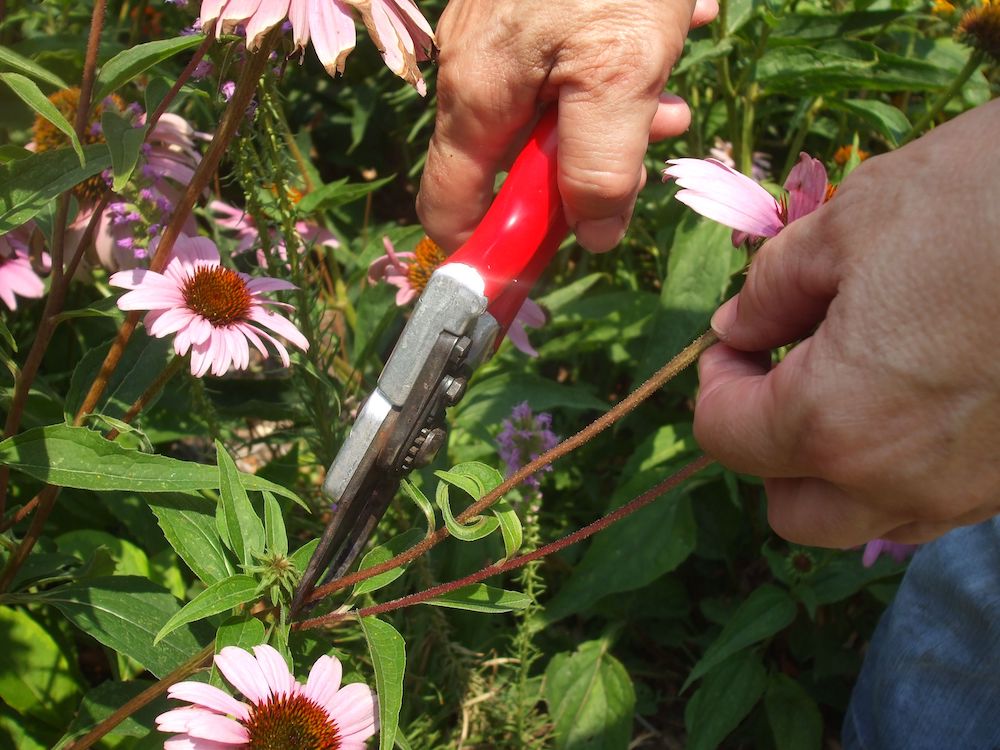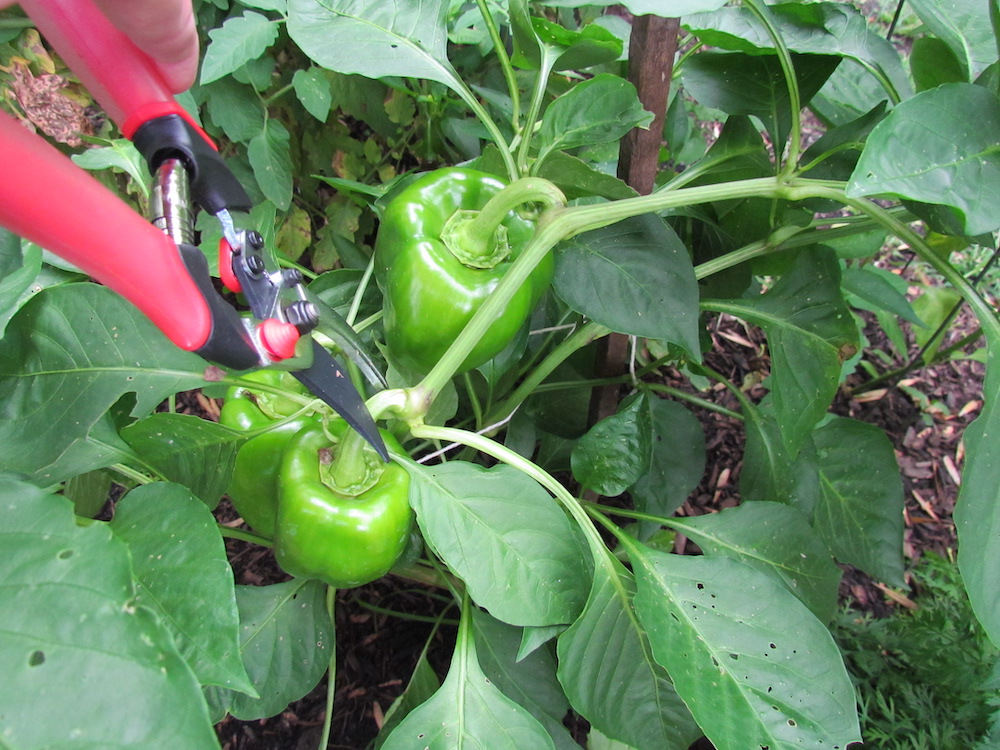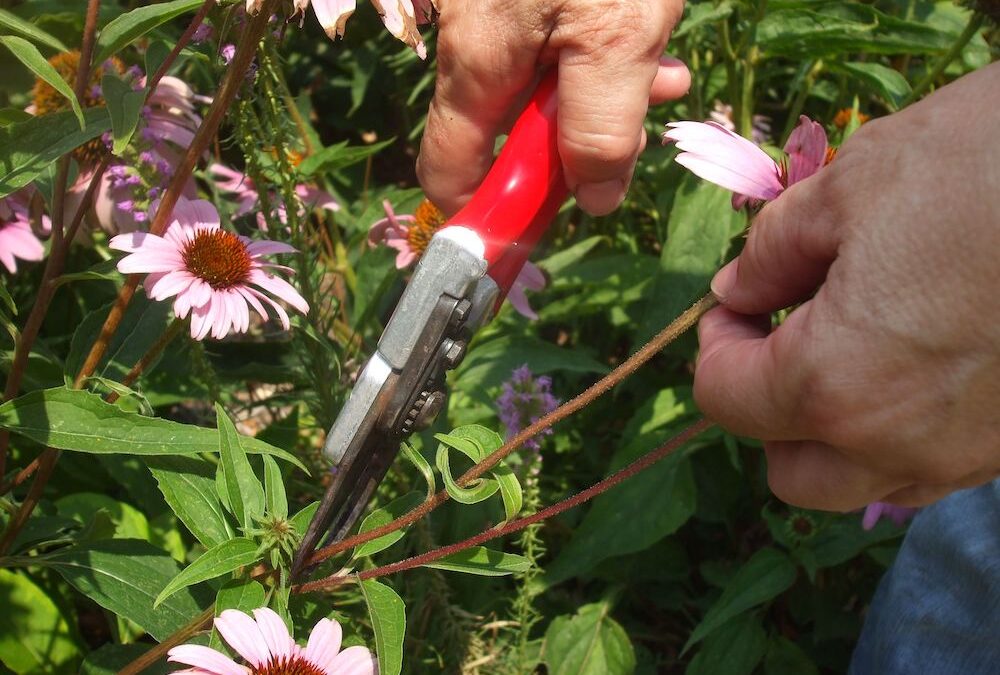One way to keep perennials and annuals blooming in summer is to cut off the dead flowers, called deadheading. Rather than snipping off the whole stem, you only remove the section with the dead flower.
Many annuals and perennials have a main stem and side shoots. When you remove the spent flowers, usually from the main stem, it allows room for the side shoots to grow and bloom.
Six perennials that benefit from deadheading
Black-eyed Susan (Rudbeckia spp.)
Coneflower (Echinacea spp.)
Garden phlox (P. paniculata)
Lily (Lillium spp.)
Salvia (S. nemerosa and others)
Shasta daisy (Leucanthemum spp.)

Remove the stem and spent flower. This allows the side shoot to develop and bloom. (C) Photo Jo Ellen Meyers Sharp
Six annuals that benefit from deadheading
Cosmos
Dahlia
Geranium (Pelargonium spp.)
Mexican sunflower (Tithonia spp.)
Snapdragon (Anthirinum majus)
Zinnia
Boost Indiana vegetable production
The best way to keep the vegetables coming on is to harvest regularly. This encourages the plants to keep producing. Harvest green beans, tomatoes, squash and other vegetables as they ripen.
Tip: Harvest a tomato by twisting its stem from the plant. For peppers and eggplants, cut the stem from the plant. Here are more harvesting tips from the Hoosier Gardener.

Use snips to cut stem of pepper from the plant. (C) Photo Jo Ellen Meyers Sharp
What about herbs in the Indiana garden?
Just like the vegetables and flowering plants, harvesting is key to keepng the herbs growing. For the best flavor, harvest herbs before they bloom. Many herb flowers are edible, too, such as mint, borage, and chives, dill and fennel.
Fertilizing and watering
Now is a good time to side dress vegetable plants with fertilizer. Sprinkle the fertilizer around the base of the plants and water it in.
For food crops, water if there’s no rain. These plants need about 1 inch of water every week or 10 days to keep them producing. Herbs can be watered as needed, although many are drought resistant.
Fertilize annuals in container and those planted in the landscape. A water-soluble fertilizer works well for this job. Perennials usually don’t need regular fertilizing. Too much fertilizer causes some perennials to flop.
Water annuals in the landscape and in pots. Perennials can usually go a week or more without irrigation. Roses, however, require more attention. Water and fertilizer regularly.
When fertilizing, always read and follow the label directions.
Landscape ready for update?
If you’re interested in redoing your landscape, please contact one of Holeman’s landscape pros.

